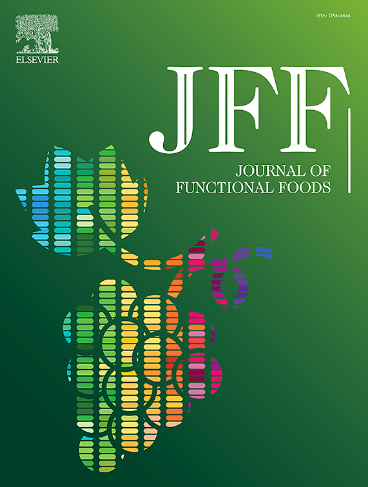牡蛎(长牡蛎)对SD大鼠骨骼肌功能的影响
IF 4
2区 农林科学
Q2 FOOD SCIENCE & TECHNOLOGY
引用次数: 0
摘要
牡蛎富含牛磺酸,这是骨骼肌功能所必需的氨基酸。广岛和兵库县长牡蛎中牛磺酸含量的季节和区域变化范围为546.0±20.6 ~ 1081.1±28.1 mg/100 g。为了评估生理效应,我们给sd大鼠口服牡蛎匀浆10天。血浆中牛磺酸水平(130.4±5.3 μmol/L vs. 97.8±5.4 μmol/L, P < 0.05)和腓肠肌中牛磺酸水平(60.7±2.5 μmol/g vs. 52.1±1.6 μmol/g, P < 0.05)显著升高。肌细胞增强因子2a、琥珀酸脱氢酶(SDH)和GLUT4基因表达上调(1.3 ~ 1.7倍),磷酸化amp活化蛋白激酶(AMPK)在比目鱼肌中表达上调(1.6倍,P < 0.05)。SDH染色和线粒体DNA含量的增加也支持线粒体活性的增强。这些结果表明,牡蛎补充剂可能通过激活AMPK来提高骨骼肌的氧化能力。本文章由计算机程序翻译,如有差异,请以英文原文为准。

Effects of oyster (Crassostrea gigas) supplementation on the function of skeletal muscles in SD rats
Oysters are rich in taurine, an amino acid essential for skeletal muscle function. Seasonal and regional variations in taurine content in Crassostrea gigas from Hiroshima and Hyogo ranged from 546.0 ± 20.6 to 1081.1 ± 28.1 mg/100 g. To evaluate physiological effects, Sprague-Dawley rats were orally administered oyster homogenates for 10 days. Taurine levels significantly increased in plasma (130.4 ± 5.3 μmol/L vs. 97.8 ± 5.4 μmol/L, P < 0.05) and in the gastrocnemius muscle (60.7 ± 2.5 μmol/g vs. 52.1 ± 1.6 μmol/g, P < 0.05). Expression of myocyte enhancer factor 2 A, succinate dehydrogenase (SDH), and GLUT4 genes was upregulated (1.3–1.7 times), and phosphorylated AMP-activated protein kinase (AMPK) increased in the soleus muscle (1.6 times, P < 0.05). Enhanced mitochondrial activity was also supported by increased SDH staining and mitochondrial DNA content. These results suggest that oyster supplementation improves skeletal muscle oxidative capacity, potentially via AMPK activation.
求助全文
通过发布文献求助,成功后即可免费获取论文全文。
去求助
来源期刊

Journal of Functional Foods
FOOD SCIENCE & TECHNOLOGY-
CiteScore
9.60
自引率
1.80%
发文量
428
审稿时长
76 days
期刊介绍:
Journal of Functional Foods continues with the same aims and scope, editorial team, submission system and rigorous peer review. We give authors the possibility to publish their top-quality papers in a well-established leading journal in the food and nutrition fields. The Journal will keep its rigorous criteria to screen high impact research addressing relevant scientific topics and performed by sound methodologies.
The Journal of Functional Foods aims to bring together the results of fundamental and applied research into healthy foods and biologically active food ingredients.
The Journal is centered in the specific area at the boundaries among food technology, nutrition and health welcoming papers having a good interdisciplinary approach. The Journal will cover the fields of plant bioactives; dietary fibre, probiotics; functional lipids; bioactive peptides; vitamins, minerals and botanicals and other dietary supplements. Nutritional and technological aspects related to the development of functional foods and beverages are of core interest to the journal. Experimental works dealing with food digestion, bioavailability of food bioactives and on the mechanisms by which foods and their components are able to modulate physiological parameters connected with disease prevention are of particular interest as well as those dealing with personalized nutrition and nutritional needs in pathological subjects.
 求助内容:
求助内容: 应助结果提醒方式:
应助结果提醒方式:


